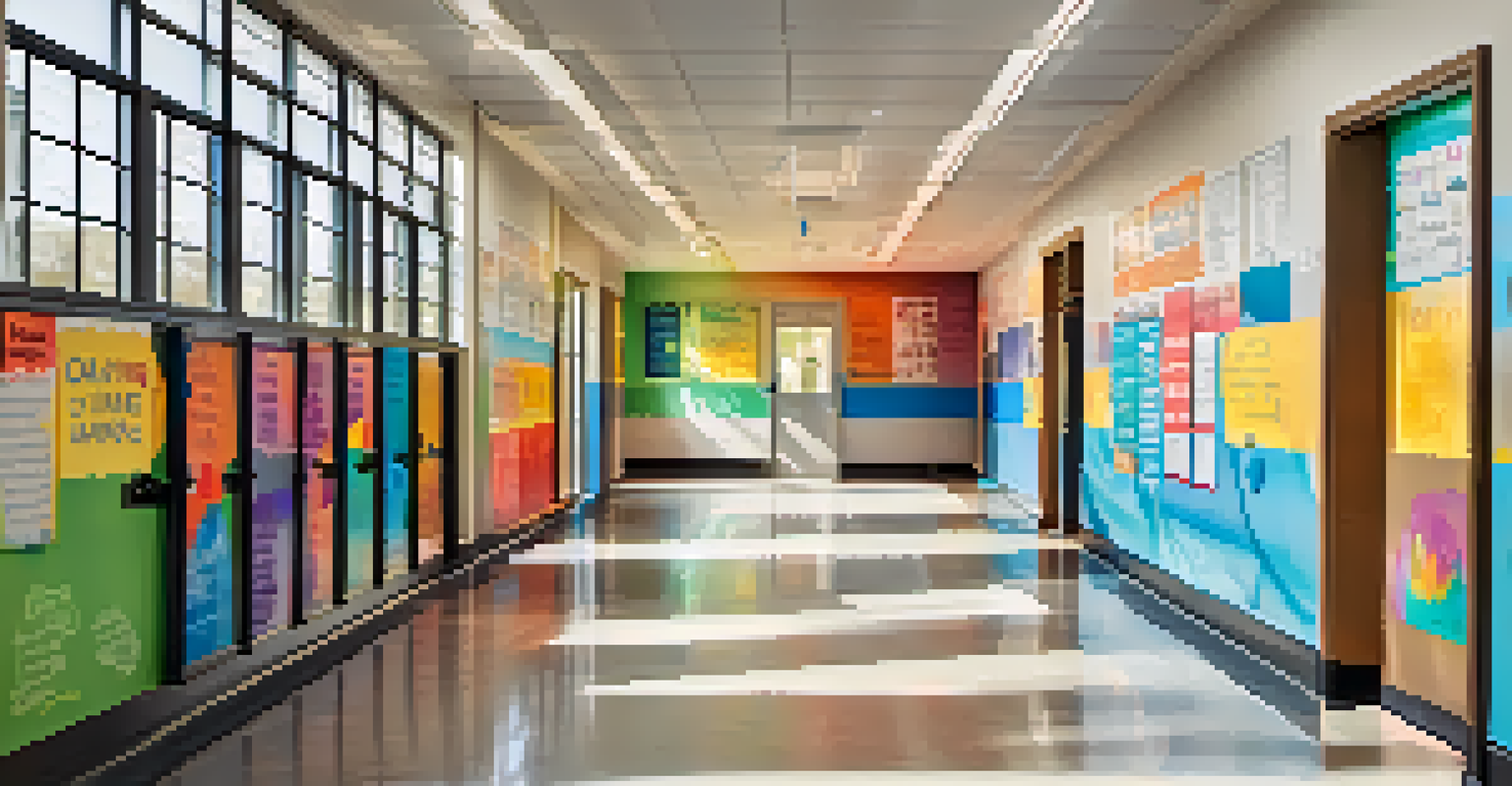Overcoming Resistance to Blended Learning Implementation

Understanding Resistance to Blended Learning
Resistance to blended learning often stems from fear of change. Educators may worry about adapting their teaching styles or the effectiveness of technology. This apprehension can create a significant barrier to implementing blended learning, making it crucial to understand the root causes of these feelings.
Change is the end result of all true learning.
Another aspect of resistance can be the perceived complexity of blended learning. Many educators may feel overwhelmed by the idea of integrating online and offline learning methods. This complexity can deter them from fully engaging with blended learning initiatives, leading to a lack of enthusiasm in the classroom.
Additionally, past experiences with technology can influence an educator's willingness to embrace blended learning. If they have faced challenges with tech tools in the past, they might be reluctant to try new methods. Acknowledging these experiences is the first step toward addressing the resistance.
Building a Supportive Culture for Change
Creating a supportive environment is essential for easing the transition to blended learning. When educators feel valued and supported, they are more likely to embrace new teaching methods. This can be achieved through open communication and collaborative planning.

Encouraging peer-to-peer support also plays a vital role in building a positive culture. When educators share their experiences and strategies, it fosters a sense of community and shared learning. This not only alleviates fear but also promotes a willingness to experiment with blended learning methodologies.
Understanding Resistance to Change
Resistance to blended learning often arises from fear of adapting teaching styles and past negative experiences with technology.
Leadership commitment is equally important in cultivating a supportive culture. When school administrators actively endorse and participate in blended learning initiatives, it sends a strong message. Their involvement demonstrates that the transition is a priority for the institution, encouraging educators to follow suit.
Providing Professional Development Opportunities
Professional development is a key component in overcoming resistance to blended learning. Tailored training sessions can help educators feel more confident in using technology effectively. Offering a variety of formats, such as workshops and online courses, caters to different learning preferences.
The greatest danger in times of turbulence is not the turbulence; it is to act with yesterday's logic.
Moreover, ongoing support after initial training is crucial. Providing access to resources, mentorship, and coaching can help educators navigate challenges as they implement blended learning. This continuous support reinforces their skills and builds their confidence over time.
Finally, involving educators in the development of training programs can enhance their engagement. When they have a voice in what and how they learn, they are more likely to invest in their professional growth. This collaborative approach can bridge the gap between resistance and acceptance.
Highlighting the Benefits of Blended Learning
One effective strategy for overcoming resistance is to emphasize the benefits of blended learning. By showcasing how it can enhance student engagement and learning outcomes, educators may become more open to the idea. Highlighting success stories can also inspire and motivate them to embrace this approach.
Sharing data and research that supports the effectiveness of blended learning can further alleviate doubts. When educators see tangible evidence of improved student performance, it can shift their perspective. This evidence serves as a powerful motivator for change.
Fostering Supportive Environments
Creating a supportive culture through open communication and peer collaboration encourages educators to embrace blended learning.
Additionally, demonstrating how blended learning can reduce their workload can also be persuasive. Tools that automate grading or provide resources can free up educators’ time, allowing them to focus on personalized instruction. This practical benefit can make the transition feel more manageable.
Addressing Technological Concerns
Technological concerns are a common source of resistance to blended learning. Many educators fear they lack the necessary skills to effectively use educational technology. Addressing these concerns proactively can help build their confidence.
Providing hands-on training sessions that focus on specific tools can demystify technology for educators. When they have the chance to practice using these tools in a low-pressure environment, they become more comfortable with them. This familiarity can significantly reduce anxiety about integrating technology into their teaching.
Furthermore, having a tech support system in place can alleviate fears of technological failure. Knowing that help is readily available can empower educators to take risks and explore new methods. This support fosters a culture of innovation and experimentation in blended learning.
Fostering Student Involvement
Involving students in the blended learning process can help ease educators' resistance. When students express excitement and engagement with blended learning activities, educators are more likely to feel encouraged. This student enthusiasm can serve as a powerful motivator for teachers to adopt new methods.
Feedback from students can also guide educators in refining their blended learning approaches. By understanding what works and what doesn’t from the students’ perspective, teachers can make informed adjustments. This feedback loop creates a more responsive and adaptive learning environment.
Highlighting Benefits for Educators
Emphasizing the advantages of blended learning, such as improved student outcomes and reduced workloads, can motivate educators to adopt new methods.
Creating opportunities for student leadership can further enhance this involvement. When students take an active role in shaping their learning experiences, it fosters a sense of ownership. This shift not only benefits students but also positively influences educators’ attitudes toward blended learning.
Measuring and Celebrating Success
Tracking progress and celebrating milestones is essential for sustaining enthusiasm around blended learning. When educators see the positive impact of their efforts, it reinforces their commitment to this approach. Regularly measuring outcomes helps to highlight both individual and collective successes.
Celebrating small victories can also boost morale and motivate educators to continue exploring blended learning. Recognizing achievements, whether through shout-outs in meetings or awards, fosters a positive atmosphere. This acknowledgment can help turn initial resistance into a sense of pride and accomplishment.

Additionally, sharing success stories with the broader school community can inspire others to participate. When educators showcase their blended learning experiences, it can spark interest and curiosity among colleagues. This ripple effect can help to create a more widespread acceptance of blended learning within the institution.
Continuous Improvement and Feedback Loops
Establishing a culture of continuous improvement is vital for overcoming resistance to blended learning. By encouraging educators to reflect on their practices and seek feedback, they can identify areas for growth. This ongoing process fosters a mindset of adaptability and resilience.
Creating regular opportunities for educators to share their experiences can enhance this feedback loop. Collaborative discussions can reveal common challenges and effective solutions, promoting a sense of community. This sharing of knowledge helps to normalize the transition to blended learning.
Finally, adapting to feedback and being willing to make changes is crucial for long-term success. When educators see that their input is valued and acted upon, they feel more invested in the process. This responsiveness can transform resistance into enthusiasm for blended learning.